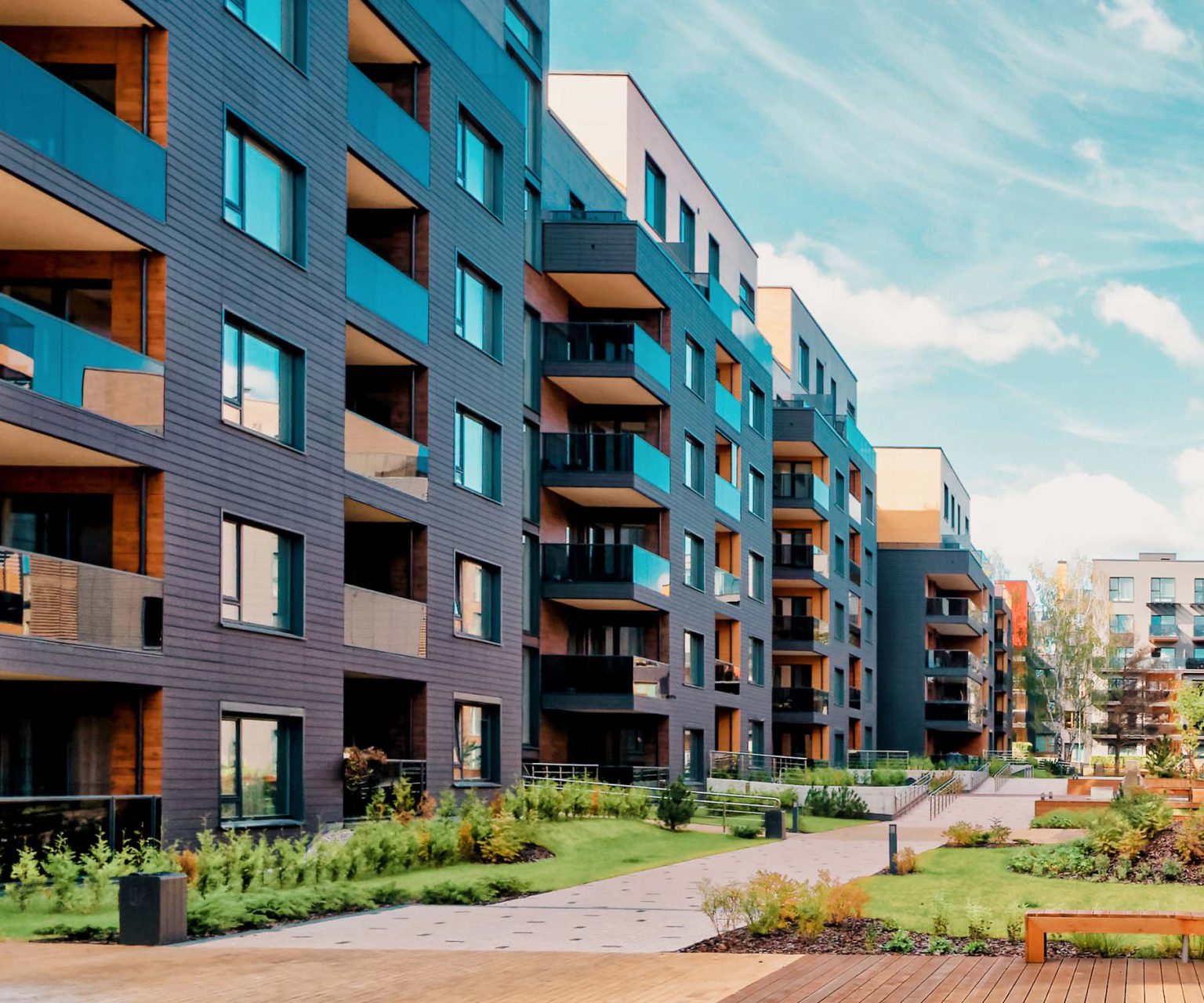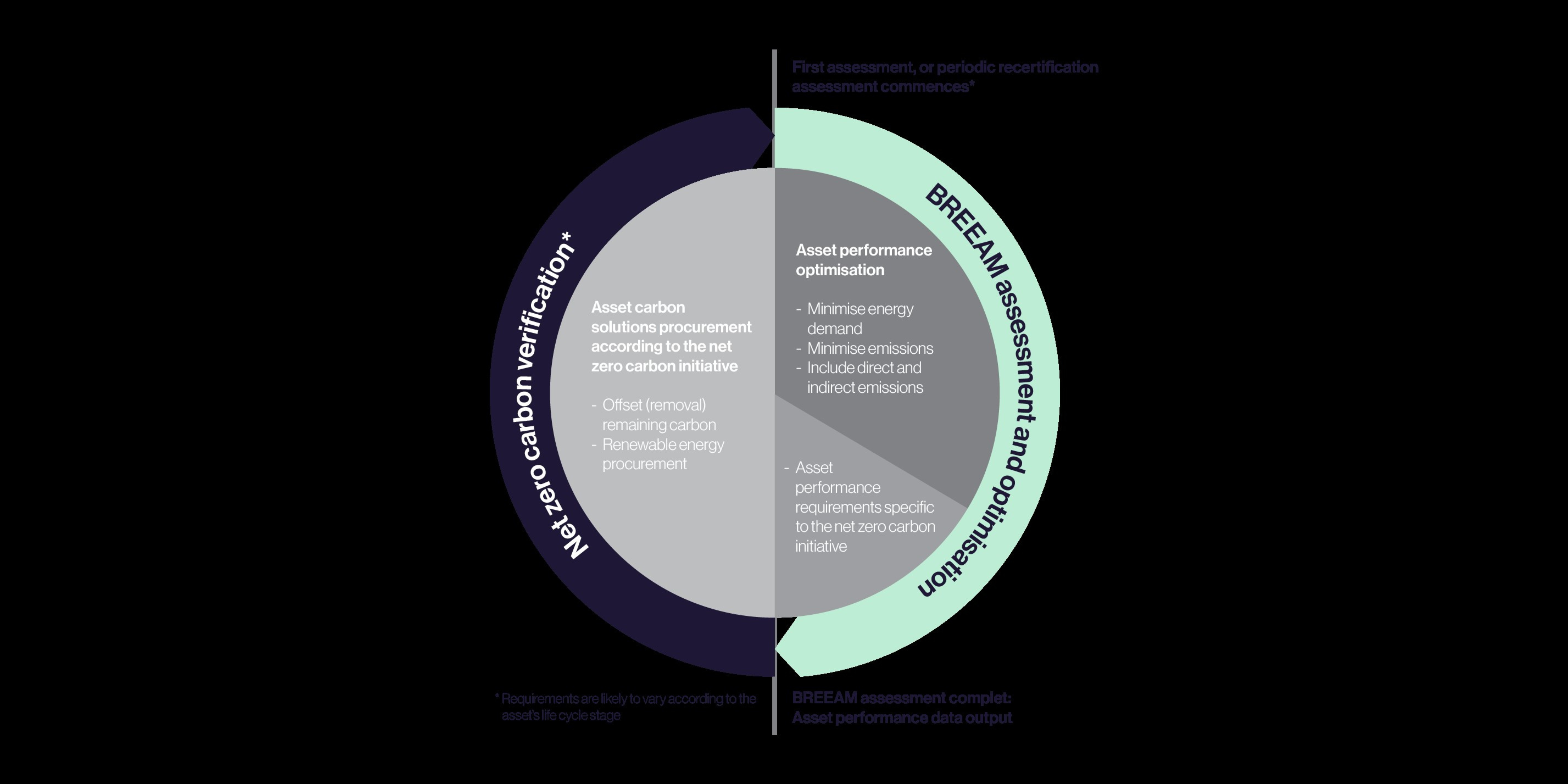Net zero carbon buildings - BREEAM
Net zero carbon buildings
Achieving net zero with BREEAM
Our vision is for a built environment that rises to the challenge of the climate emergency. BREEAM supports the current and future generations in creating a resilient environment that meets its sustainability and commercial goals. BREEAM is a trusted framework used to develop and operate efficient, warm, and affordable assets to improve comfort, health and wellbeing of occupants.
We envision a built environment that plays a pivotal role in achieving net zero globally by 2050 and avoiding 1.5 degrees warming.
BREEAM supports solutions to decarbonisation in the built environment, real estate, and associated investments by:
Minimising carbon emissions in the new development, refurbishment, and operation of assets.
Providing assessment methodologies for carbon emissions, including embodied carbon.
Encouraging the use of onsite renewables and providing credits for energy and carbon reduction.
Providing third-party verification of carbon emission assessment.
Net zero in context

Net zero – climate context
To avoid catastrophic impacts of climate change, the 2016 Paris Agreement stated that we must limit global warming to 1.5°C. This was re-iterated at COP26, where the Glasgow Climate Pact had countries agree to revisit and strengthen emissions targets for 2030. The Glasgow Climate Pact only keeps 1.5C in sight if countries take concerted and immediate action to deliver on their commitments. Achieving net zero is essential to reaching this target, which means considerable changes in society, the economy and our relationship with the environment, such as:
- High-performance net zero buildings, improving energy efficiency, and reducing energy demand.
- Switching to sustainable mobility including public transport and ultra-low emissions vehicles.
- Reducing land based emissions, and regenerating biodiverse landscapes for nature and climate.
- Utilising the potential for renewable heating and electricity to meet our energy needs.
What is net zero?
Net zero is the internationally agreed upon goal for mitigating climate change and keeping warming to 1.5 °C. Net zero refers to a state in which the greenhouse gases going into the atmosphere are balanced by removal out of the atmosphere. All definitions of net zero carbon require for reducing emissions before offsetting them. This means reducing carbon emissions, including in-direct embodied carbon known as Scope 3 emissions, prior to offsetting through carbon removals.

Net zero and the built environment
A better understanding of net zero carbon is vital across the built environment sector, along with agreement on the carbon performance trajectories needed to achieve it. What we do understand, is that the built environment sector must achieve net zero carbon by 2050 to align with the Paris agreement to limit warming to 1.5 degrees. BREEAM is working with Green Building Councils, local and central government, and other stakeholders to achieve greater consensus on how to achieve net zero carbon.
The ‘ 2021 Global Status Report for Buildings and Construction’ by the UN states that “The buildings and construction sector accounted for 36% of global energy demand and 37% of energy and energy-related carbon dioxide (CO2) emissions in 2020”.
The report goes on to say that “building certifications will play a key role, especially in regions where mandatory building energy codes are not (yet) in place. While uptake of green building certification increased 13.9 per cent in 2020 compared to 2019, countries should consider using certification systematically for all building types”.
This is of relevance to BREEAM assessments that aim to do just this – minimise direct and indirect emissions during the design and operation of assets.
Net zero in BREEAM
Minimisation of carbon emissions through BREEAM
A BREEAM rating balances asset performance across a holistic framework of sustainability issues. If one particular issue is more important at a given time and in a given location than the others, as climate change undoubtedly is, it is given more prominence in the overall BREEAM rating.
BREEAM standards cover a wide scope of asset related carbon emissions including operational energy, embodied carbon, operational water, construction activities and more. BREEAM standards are designed to focus on decarbonisation and carbon emissions more than any other sustainability issue.
For organisations wishing to achieve net zero carbon, BREEAM provides robust measurement and helps minimise carbon emissions at the asset level as a critical foundation for the final steps to net zero carbon.
Embodied carbon emissions & BREEAM assessments
Accurately measuring and reporting on embodied carbon is one of the main challenges faced in achieving net zero carbon buildings. BREEAM assesses embodied carbon and encourages the construction of assets with lower embodied carbon and lower whole life carbon.
BREEAM intends to combine operational and embodied carbon credits into a dedicated carbon category. This will help demonstrate to stakeholders that embodied carbon is fully accounted for in BREEAM and that it needs to be considered alongside operational carbon to achieve an optimum outcome overall. We are developing this through consultation within our net zero carbon technical working group.
Renewable energy and BREEAM assessments
In line with prevailing energy and LCA standards, BREEAM includes onsite/near-site renewables. In addition, most (but not all) standards, including BREEAM, assign carbon reductions resulting from any renewable electricity that is exported to the grid by the asset. Therefore, assets can become carbon positive if they generate more electricity than they use. BREEAM will continue to recognise and reward onsite/near-site renewables.
Net zero in construction and real estate
BREEAM can support the real estate and construction sector in demonstrating compliance with international net zero carbon initiatives and definitions by using asset core performance data from BREEAM assessments, along with other factors, to determine whether an asset fulfils the requirements of each net zero carbon initiative.
Following a BREEAM assessment, outputs tailored to suitable net zero carbon initiatives/definitions will streamline their use, enhance integration and leverage greater value from work already done for BREEAM assessments.
Net zero in construction and real estate
To help visualise what the net zero carbon module might look like, the diagram below illustrates how core asset carbon performance data from a BREEAM assessment may be utilised by an organisation wishing to operate an asset as net zero carbon, with the net zero module providing a seamless add on, fast-tracking your journey to net zero carbon.

Train with BREEAM
Train with us to provide built environment sustainability solutions and learn how to support projects in achieving their net zero goals.
Our BREEAM training courses teach you how to use the world’s leading green building tool to achieve sustainability success. Millions of assets all over the world are registered with BREEAM and starting their journey to sustainability success.
Browse our BREEAM courses
